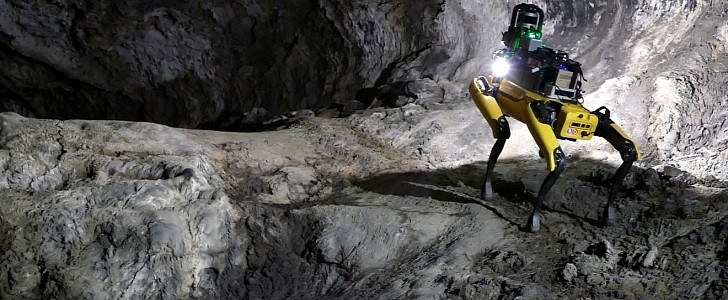In an abandoned Kentucky limestone mine, eight teams featuring dozens of robots from more than 30 institutions, including NASA's Jet Propulsion Laboratory (JPL), are battling in a series of challenging underground scenarios. The goal? To showcase new robotic autonomy capabilities and compete for the chance to win $2 million.
The event, organized by DARPA, marks the last round of the Subterranean Challenge, which began three years ago. The competition focuses on developing autonomous robotic systems for first responders in subterranean environments where direct communication and GPS are unavailable.
Plus, the tech developed for the SubT Challenge also has direct applications for space exploration. The JPL-led Team CoSTAR is participating to display a variety of driving, walking, and flying robots that might one day be used to explore the rugged terrains on other worlds.
The SubT Challenge is composed of two tracks, namely the Systems track and the Virtual track, each of which is separated into three events: the Tunnel, Urban, and Cave Circuits. The Virtual competition focuses on building software that can compete in simulation-based events, whereas the Systems challenge focuses on physical robots that function in real-world settings.
The Tunnel Circuit took place in 2019 in mining tunnels under Pittsburgh, with Team CoSTAR placing second, and the Systems Competition Cave Circuit was canceled in the fall of 2020 due to the pandemic.
Now, after a one-year hiatus, the final event is back. It runs from September 21 to September 24 in the 4-million-square-foot (370,000-square-meter) Louisville Mega Cavern, where the teams will face extreme conditions, ranging from cave systems with uneven passageways and huge caverns to complex subterranean structures that can reach several stories high.
There will also be environment-specific items, such as a carbon dioxide-emitting source that simulates a gas leak or a helmet in a cave that indicates a close human presence. The team of robots must operate autonomously, with no or minimal radio communication with a single human supervisor. The robots must complete all the tasks in one hour.
Team CoSTAR's strategy is to first send in robot scouts to investigate the environment, then pick a subset of robots based on their manner of locomotion to collectively meet the overall mission goals.
You can watch the final event and highlights of the DARPA Subterranean Challenge on the agency's official Youtube channel.
Plus, the tech developed for the SubT Challenge also has direct applications for space exploration. The JPL-led Team CoSTAR is participating to display a variety of driving, walking, and flying robots that might one day be used to explore the rugged terrains on other worlds.
The SubT Challenge is composed of two tracks, namely the Systems track and the Virtual track, each of which is separated into three events: the Tunnel, Urban, and Cave Circuits. The Virtual competition focuses on building software that can compete in simulation-based events, whereas the Systems challenge focuses on physical robots that function in real-world settings.
The Tunnel Circuit took place in 2019 in mining tunnels under Pittsburgh, with Team CoSTAR placing second, and the Systems Competition Cave Circuit was canceled in the fall of 2020 due to the pandemic.
Now, after a one-year hiatus, the final event is back. It runs from September 21 to September 24 in the 4-million-square-foot (370,000-square-meter) Louisville Mega Cavern, where the teams will face extreme conditions, ranging from cave systems with uneven passageways and huge caverns to complex subterranean structures that can reach several stories high.
There will also be environment-specific items, such as a carbon dioxide-emitting source that simulates a gas leak or a helmet in a cave that indicates a close human presence. The team of robots must operate autonomously, with no or minimal radio communication with a single human supervisor. The robots must complete all the tasks in one hour.
Team CoSTAR's strategy is to first send in robot scouts to investigate the environment, then pick a subset of robots based on their manner of locomotion to collectively meet the overall mission goals.
You can watch the final event and highlights of the DARPA Subterranean Challenge on the agency's official Youtube channel.







